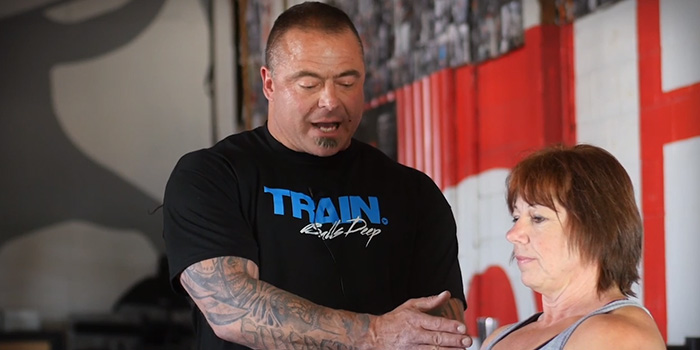
The kettlebell snatch is without a doubt one of the most technically demanding movements that requires precision technique to conquer. There are many different movements involved when propelling a kettlebell from your hips directly overhead to a lockout position with proper trajectory and mechanics. For kettlebells, it definitely is the most difficult movement to teach and master. I always compare the snatch to teaching somebody a golf swing: there are so many things to pay attention to that you can almost become paralyzed trying to consciously incorporate everything at once into one movement.
A few things to pay attention to is the “hip and shoulder” relationship that we discussed and demonstrated with the kettlebell clean video. In order to correctly load the hips to propel the bell overhead, an athlete must initially load the hips with the shoulders forward and hips back, and then propel the hips forward and pull the shoulders back keeping the arm extended and connected to the hips for maximum power output. All the power for the snatch is directed through the heels of the feet, the hips and through the extended arm. If your arm is not connected to your hips, you can’t utilize the power from your hips and you end up pulling the bell up with the shoulder, expending precious energy.
Remember, the key is to obtain maximum performance with minimal effort, which is why technique is so important. The trajectory of the bell on the ascent should be to try and guide it as close to your body and your centre of gravity as possible. The farther away from your center of gravity, the more strain on your shoulder and the harder it is to land the bell properly without slamming it into your forearm.
After lockout, we want to try and make the bell as light as possible on the descent because the most vulnerable part of the snatch is your grip at the bottom. You want to try and lead the descent with the elbow as close to your body as possible and absorb the kettlebell at the bottom of the movement with the proper “hip and shoulder” relationship and knee dip to get into the proper position to reload the hips and propel the bell once again into the lockout position.
A proper snatch sequence looks like a nice continuous fluid rhythmic motion. It is also imperative to breathe properly when training with kettlebells. Any interruption in your breathing pattern will suffocate your ability to perform longer training sets. During the snatch ascent you take in a small “sniff” of air through your nose and breathe out at the top lockout position. On the descent, you take another breath of air through your nose and breathe out at the bottom of the movement. You need to continuously breathe like an air pump to keep enough energy to perform your set.
When we visited the S4 Compound recently, Sheri and I did a couple of instructional kettlebell videos to help you improve your technique and understand some of the mechanics, trajectory and technique involved in Kettlebell Sport training.
WATCH: Mastering the Kettlebell Clean
WATCH: Technical Demonstration of Competitive Kettlebell Sport










4 Comments